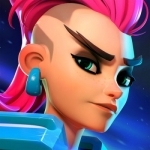
PhotoGrid - Pic & Video Editor
Photo & Video and Lifestyle
App
A must-have free photo editor app for photography fanatics and Instagram users! It's packed with...

Adobe Photoshop Fix
Photo & Video and Productivity
App
Adobe Photoshop Fix enables powerful, yet easy image retouching and restoration on your iPad or...

MyKeto - Low Carb Keto Tracker
Health & Fitness and Reference
App
What is the Ketogenic Diet? The Ketogenic diet is a fast-growing low carbohydrate, high fat (lchf)...

Sweat: Kayla Itsines Fitness
Health & Fitness and Lifestyle
App
Sweat with the Kayla Itsines BBG Program and join the world’s biggest female fitness community and...

Think Ladder
Health & Fitness and Medical
App
Thinkladder is a Cognitive Behavioural Therapy and meditation hybrid app. The app allows users to...
![[5 CD]Classic Guitar [100 Classical music]](/uploads/profile_image/36f/31b0614a-0508-428e-8e43-f6757a04c36f.jpg?m=1522361064)
[5 CD]Classic Guitar [100 Classical music]
Music
App
3 Series 5CD 100 most classic Guitar ▪ [2 CD]Masters of the Guitar ▪ ▪ [2 CD]Spanish Guitar...

Detox Diet Pro - Cleanse and Flush the Body
Food & Drink and Health & Fitness
App
Detox diet is a recipe app that provides over 100 recipes to help you lead a healthier life. ...

Bedtime Stories For Children
Education and Book
App
**** 180+ New Stories Added **** Story time is learning time with 'Stories For Children: Bedtime...

Planet of Heroes - Brawl MOBA
Games
App
Looking for an exciting real time war game for smartphones? Welcome to Planet of Heroes: stunning...

Photogenic Studio Photo Editor
Photo & Video
App
"EVERYONE IS PHOTOGENICS" Are you searching the right photo editing app for your mobile...